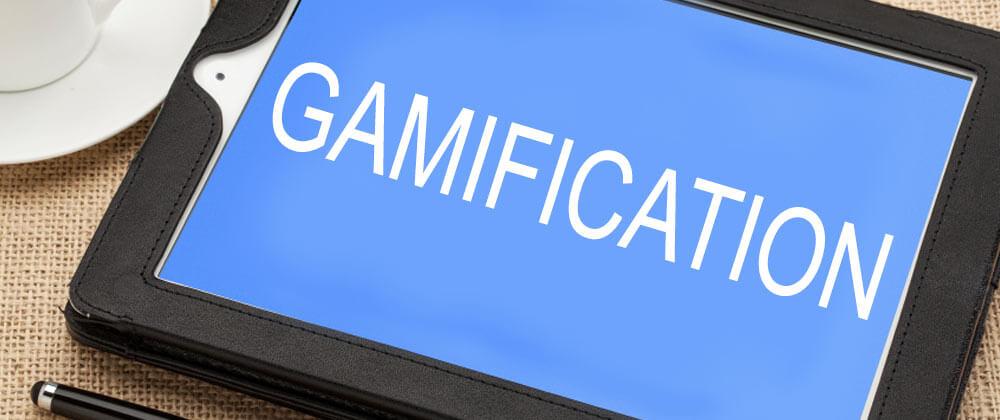Designing a Gamified Learning Experience
Shauna Carson
One way to increase learners' eLearning engagement is to implement gamification, but gamifying eLearning experiences isn't always easy. Today, I'm going to share five ways you can gamify eLearning experiences, including points, leaderboards, open badges, avatars and animations, and ensure you get the most out of your training programs.
In a perfect world, your learners would be intrinsically motivated to take part in their assigned training program.
Through needs analysis, definition of objectives, development and on through implementation, the resulting program should meet your learners' needs and have a tangible value for them.
We all know, however, that no matter how much effort you put into a training program, motivating learners to take part and actually complete their training is an uphill battle.
Let's look at five powerful examples of gamification you should implement to enhance the eLearning experience.
What is Gamification?
There has been a steady rise in the market growth of gamification, from $242 million in 2012 to an expected $5.5 billion in 2018.
Truly, gamification is all around us these days.
For example, you may have received a free coffee this morning thanks to a loyalty card that rewards your 10^th^ purchase.
These gamified experiences feed into the innate sense of competition that drives human behaviour; they motivate and encourage, which is exactly what you want in your training program. But what exactly is gamification?
Gamification is the use of game mechanics, such as points, badges and leaderboards, as well as other concepts borrowed from the gaming world, to engage and motivate learners. The incorporation of gamification into your training program has many benefits. It:
- Makes eLearning fun
- Enhances the learning experience
- Increases learner motivation
- Provides a framework for microlearning
- Facilitates learning through feedback
- Effects behavioural change
- Improves ROI
Game mechanics such as points, badges, levels, rewards, progress bars and leaderboards will motivate learners.
5 Ways to Gamify eLearning Experiences
Before starting your eLearning development process, you should identify why you should use gamification and how it will serve your learning goals and objectives.
A gamified eLearning experience is only effective if it is suited for your audience and helps you achieve your training program goals.
Let's take a closer look at how you can incorporate gamification into your training program, and how SkillBuilder® LMS can help you achieve your goals.
1. Reward Learners with Points
Learners are awarded for the achievement of single or combined actions in their learning journey.
Points are tied to some other game mechanics and rewards, such as leaderboards, levels or badges.
For example, in SkillBuilder® LMS, administrators can assign different point values to individual learning items in a learning path. Under this points system, learners are rewarded with a fanfare and awarded points every time they complete a specific action.
Once learners understand the importance of rewards, they will be more interested in earning more points, and perform better in their online training.
2. Inject a Sense of Friendly Competition with Leaderboards
Points that a learner earns by completing learning items will contribute towards an overall leaderboard standing.
Leaderboards inject a sense of friendly competition into your learning program and motivate learners to perform better than their peers.
For example, SkillBuilder® LMS has created 6 tiers, from Copper to Diamond, that represent how much of their assigned training a learner has completed. Tiers awarded to learners are also visible on the leaderboard.
3. Reward Skills and Achievements with Badges
Open Badges, are digital badges that reward users for specific behaviors.
Badges are a social aspect of gamification and can be shared online across various social networks, so make sure to use them when you think users will see a value behind displaying them to others.
They are embedded with metadata about your skills and achievements, including:
- Hard skills such as proficiency in a programming language
- Soft skills like collaboration
- Official certification
- New skills and literacies not recognized by traditional education providers
The latest update to SkillBuilder® LMS now gives administrators the ability to create, set up and align open badges with individualized learning paths within the learning management system.
SkillBuilder® LMS allows learners to download Open Badges they earn through the completion of certain learning paths, and post their achievement to platforms such as Facebook, LinkedIn and Google+.
There is more to gamification than game mechanics, however, so let's explore some additional features that can be used to engage learners in their training.
4. Add Avatars in Gamified Learning
Another way to incorporate gamification into learning experiences is to utilise a character. The most common way to do this in eLearning is by including avatars.
Karl Kapp notes that simply adding a character to an online module serves to more deeply engage learners.
An avatar is your gaming identity. This game mechanic allows personalization in a game. The more learners can customize the avatar, the more they can refer to it.
For example, courses built by the BaseCorp team can be customized and configured to meet your unique business needs, including the use of a range of avatars and narration. These characters can be used to model desired behaviour, and provide information and feedback to learners.
5. Bring Interactions & Animation to eLearning courses
A key way to engage learners in gamified eLearning experiences is to provide interactions. Games are filled with different interactions.
With the advent of gamification, expecting learners to simply click a Next button to change the screen won't cut it. Even if they are motivated enough to complete the course, knowledge transfer will absolutely suffer.
Today's training programs need to look for new and interesting ways to immerse learners into a course, and SkillBuilder® LMS can help.
SkillBuilder® LMS supports eLearning courses that include an array of strategies to increase user interaction, from click and reveal graphics, to drag and drop activities, custom Flash™ animations, rollover text, embedded videos, journal entry forms and more.
Conclusion
This article has discussed game mechanics, such as points, leaderboards and badges, avatars to convey information and feedback and interactions and animation to convey knowledge and test comprehension.
These are all key ways you can design a gamified learning experience. Access our free eBook, Optimizing Competency-Based Learning, and get more ideas on how to engage learners through interactive activities.
Free eBook
Learning Resource Development: The Basics
Learn how to create accessible content, choose the right voice, incorporate meaningful graphics, and more!
TopicsChoose Topic
📘 Ready to Elevate Your Learning Strategy?
Explore our comprehensive library of eBooks and tools on learning resource development, competency-based learning, and LMS implementation. Transform your training programs with insights from industry experts and practical templates.
Shauna Carson
Shauna graduated from the University of Toronto in 2002 with a Master of Arts in English before moving home to Calgary to work in the fast-paced, detail-oriented oil and gas industry. Now certified as a technical writer, Shauna is comfortable writing in a variety of styles, and for a variety of audiences.

